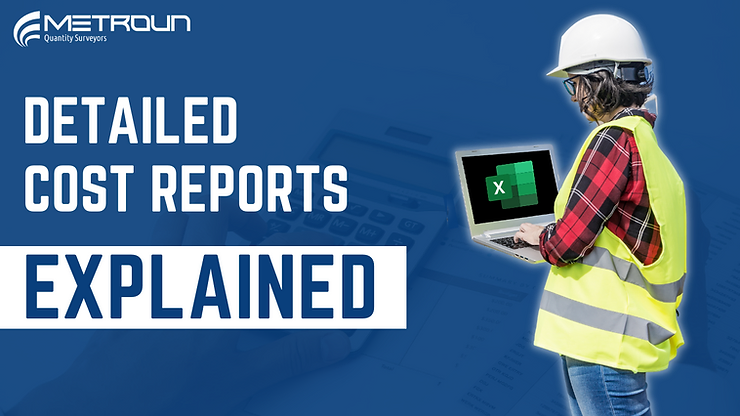Cost reports are a vital tool in construction used by Quantity Surveyors to report on expenditure & assess the financial performance of a construction project. In this article, we’re going to explore them in more detail to ensure you’re making the most out of these reports.

Cost reports, are reports generated by a company’s accounting software. To name a few, your company may use causeway, SAP, oracle, xero, procure or sage. Sometimes compromising thousands of excel lines, these reports return a detailed breakdown of all cost on a project. They can be used to form application for payments or categorising into a format necessary for weekly or monthly financial reporting. In this article, we’re going to look into an example cost report, understand what information each column provides, and talk how this information can be combined with Excel pivot tables to categorise cost for examination, scrutinising & reporting.
Okay so let’s begin, we’re going to break this into sections. The order, and names of these columns will vary depending on your companies’ format. However, they all offer similar information.
Project Reference
The first column is project reference. This used to differentiate cost between projects. Salaries of personnel & invoices from suppliers will be allocated to the relevant project code and subsequently appear on the cost report for the relevant project. Sometimes cost is booked to the wrong project, and a journal is carried out to correct this error, moving the cost to the correct project.
Cost Component
Next up we have cost component. This column differentiates cost between labour, plant, materials, subcontract & charges. This column comes in useful when reporting the financials of a project. Understanding what is being spent in these key areas compared to what was budgeted, is vital to understanding if a project is on track financially, or if there are any issues that need to be addressed.
Cost Date
This is usually the date when the cost appears on the ledger. However, it may also be directly related to when the work took place. For example, some companies require employees to carry out electronic time sheets & allocate how many hours were worked on projects on certain days. In this instance you may find the cost date reflecting the actual day that personnel carried out work under a specific project. This isn’t always the case, and often cost is grouped together into a package of cost like salary payments at the end of the month. However, this column will give you an idea as to what period the cost relates to. For example, if you have a subcontractor on 28-day payment terms, then the ledger item would relate to works carried out in the prior month.
Description
This column gives further detail on what the cost relates to. For example, the name of the associated person, or the group which it relates to i.e., July’s staff salary. If it’s a material, it will detail information about the specific material. For example, cladding or timber beams. If it’s for subcontract cost it will detail the supplier’s name.
Amount
This is the most vital column. It returns cost relating to that specific ledger item, and is used to identify the actual spend.
Fee
This is normally displayed if you are working on a cost contract. The fee agreed with the client is displayed here and can be added to the amount column in order to calculate the revenue on a project. Sometimes you may have multiple fees on the same project. For example, the fee for subcontract cost, may be different to the fee for direct cost.
All the information discussed in this article can be combined with pivot tables for categorisation, examination, scrutinising & reporting. We have a video on our channel where we talk about how to create a pivot table from a detailed cost report on Excel – click here to find out out more.
Why not watch our video on this subject?





